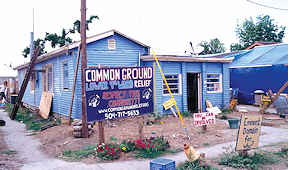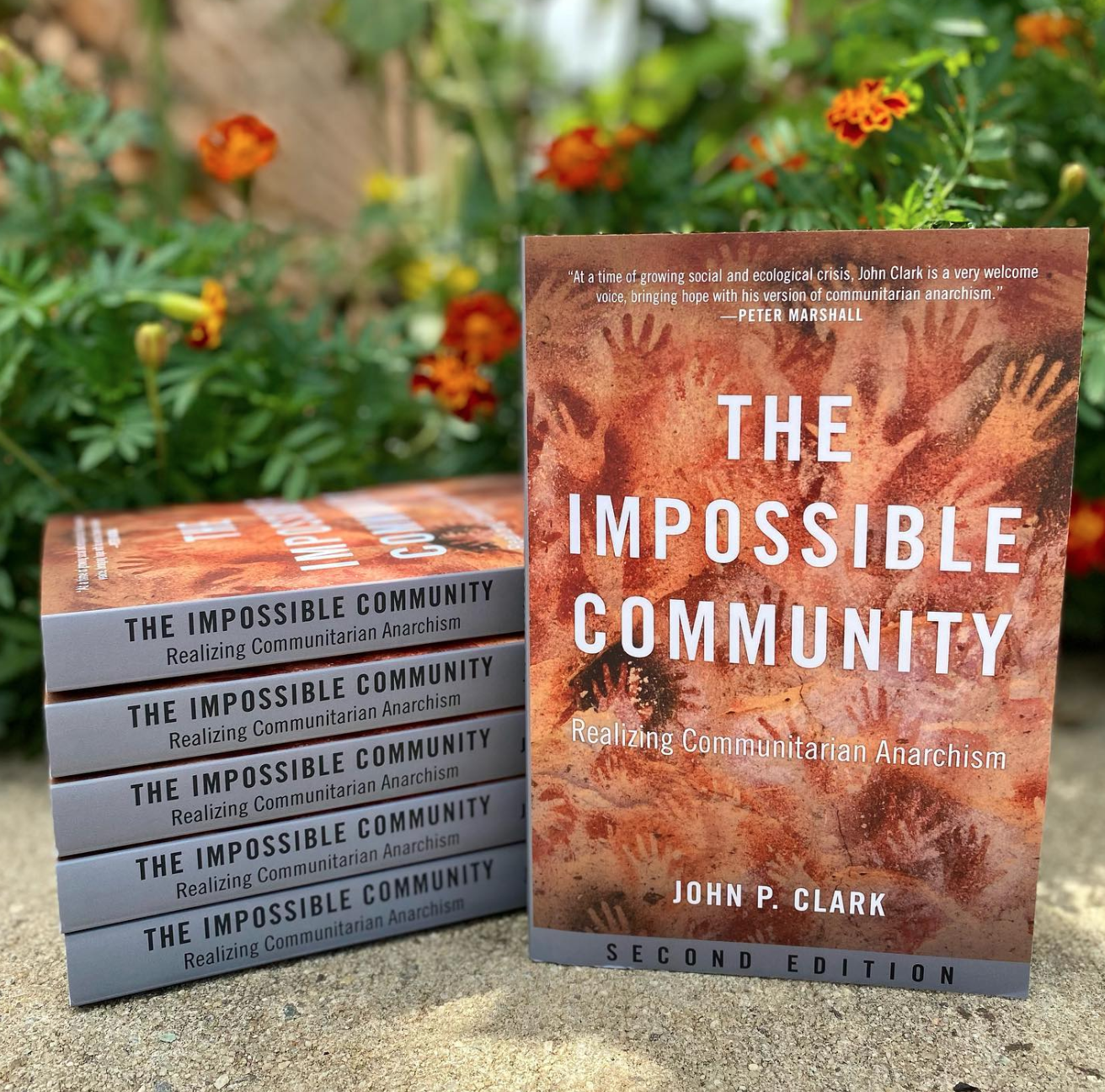The impossible becomes possible when we define our own reality
Hurricane Katrina, the disaster that hit New Orleans and the Gulf Coast in 2005, was “the most devastating experience I have lived through, but also the most uplifting and inspiring,” writes NOLA native John P. Clark, whose family goes back generations in the Crescent City.

While the State demonstrated once again its great ability to destroy life and its inability to save it, the “communities of compassion and solidarity” formed by people who lost everything to government neglect and natural disaster were the closest thing Clark had ever experienced to his “social ideal.”
The Impossible Community, published in 2013 and now reappearing in a second edition, is partly a tribute to the highly effective grassroots networks of mutual aid that sprouted in New Orleans after Katrina. The lessons for survival and organizing which emerged from that terrible but inspiring time, anchor some of the larger points Clark makes here.
They drive him back, for example, to German anarchist Gustav Landauer’s contention that free communities can only be built out of “free communal practice” from the ground up, that is, from concrete experience rather than by following a top-down ideology or doctrine. Social transformation is most durable when it arises not from one source or idea, but from many. From the collective wisdom of neighborhood or village assemblies, worker cooperatives, labor exchanges, community-based media, bookstores, cafes, affinity groups and intentional communities, all sharing and comparing their experience and ideas.
All of which sounds impossible only if one ignores millennia of practice in primary or base communities around the world, and pays heed only to what the State and capital want us to assume. “‘Reality’ is whatever is enshrined in the dominant ideology, imaginary, ethos, materiality, and institutional structure,” Clark writes. The impossible becomes possible when we decide to make our own reality, which could be as humble as a really, really free market or a copwatch patrol (not to downplay the effort required to do so).
This is the practical foundation for Clark’s book, but it contains a lot more. Clark is a longtime academic philosopher and frequent contributor to the Fifth Estate. The Impossible Community attempts to synthesize Hegel and John Dewey, Marcuse, Landauer, and anarchist geographer Elisee Reclus, among others, to arrive at a new understanding of freedom: the basic attribute of the kind of community he’s searching for. He distinguishes authoritarian from anti-authoritarian utopias. And, he enlists the dialectic, as defined by Hegel and Marx, to understand how and in what direction a constantly changing world develops out of contradictions between ideas and conditions.
Along the way, Clark pursues a running attack on longtime nemesis, anarchist theorist Murray Bookchin, in particular, Bookchin’s criticisms of so-called lifestyle anarchism and what Clark sees as his dogmatism and tendency to divorce politics from concrete social developments and innovations. Are cooperatives and collectives really “marginal projects,” as Bookchin wrote dismissively? No: they are just the sort of “diverse, multidimensional experiments in democratic processes” out of which a new society beyond the State and capitalism will be born, Clark answers.
This quarrel is just a bit dated, and already was when Clark’s book was first written, but it takes him in some interesting directions.
Why is it, he asks, that the far right in the U.S. seems to be so much better at grassroots organizing today than the left, for which it was once foundational? The difference, Clark suggests, is that today the mainstream “progressive” left organizes primarily through the State—through elections, the civil service, and academia—while the reactionary right assembles its forces in direct conversation with people disaffected by the State, facilitated by social media, evangelical churches, and violent populist formations like the Proud Boys. These are the right-wing counterparts of cooperatives, collectives, and village assemblies. The right is hot; the left is cool: not necessarily to its advantage.
To demonstrate how powerful, durable, and transformative social movements can be, Clark looks beyond post-Katrina New Orleans and the communities it spawned, to the legacies of Gandhi’s organizing in South Asia: the Sarvodaya (“welfare for all”) movement in India and its counterpart in Sri Lanka, Sarvodaya Shramadana, which promote land redistribution, local autonomy, and a rejection of private property. Gandhi understood the need for an autonomous social transformation through a growing network of Sarvodaya organizations and villages before the State itself could be replaced. Otherwise, the revolution would simply recreate the thing it overthrew.
Clark rejects Bookchin’s criticisms of the last 30 years or so of anarchist organizing, during which the movement against corporate globalization, the Occupy encampments, and the networks that built out of them made affinity groups and new forms of movement media important aspects of left organizing. Even in U.S. cities, the center of capitalist society, anarchists are developing new forms of resistance that can and should be part of the collective conversation between communities that aim to bring social and political transformation about.
Clark’s demand for a “diverse, multidimensional” movement toward communitarian anarchism dovetails with his interest in the slippery term “freedom.” For many if not most Americans, it has largely meant freedom from coercion: from being told what to do, whether to wear masks during a pandemic, restrict their deployment of firearms, or let their kids be taught that an LGBTQ identity is not evil. Genuinely transformative change can take negative as well as positive directions.
Following Reclus’s lead, Clark argues that the more important freedom is from systems of domination, ranging from bureaucracy to fascism to consumerism to today’s quasi-autonomous technological systems, which deny people and communities any real control over their destinies. Only then can we enjoy “personal and communal self-determination”: the freedom to build a community “that is a collective expression of our social being and our social ideals, rather than being an obstacle to them.”
Behind this lies a further argument that libertarian communalism is not a contradiction. Out of the tension between individual needs and desires and those of the collective, a new anarchist society is born. In a postscript, Clark tells us, somewhat cryptically, that the “key step in personal and social transformation” is located “at the level of the person-in-community and each person’s moment-to-moment practice within that community.” I would have liked for him to explain this intriguing statement.
Not having read the first edition of this excellent book, I don’t know how extensively the new edition has been revised, but would have appreciated if Clark had brought it up to date with more recent examples of transformative social movements.
How, for example, does the Gandhian philosophy behind Sarvodaya compare with the Bookchin-inspired, PYD-led Kurdish polity in northern Syria? The Rojava communities’ successes and failures have a lot to tell us about the key issue that Clark does not discuss: how to achieve an anarchist social transformation under the nose of the State, without the State squashing or co-opting it before it can take hold?
If Clark decides to write that book, I’ll be among the first to read it.






